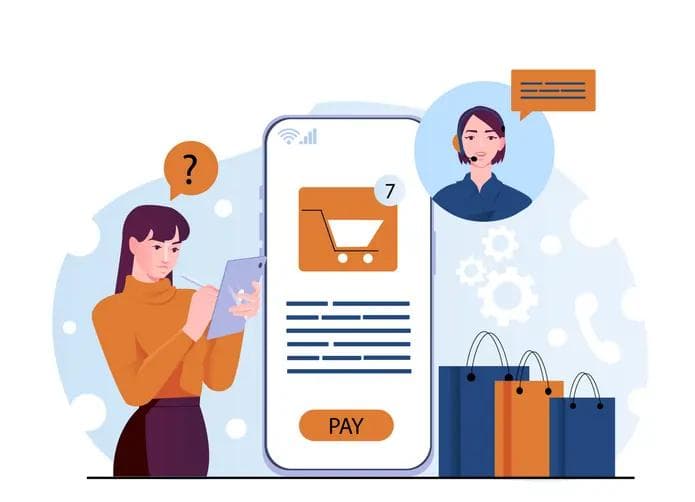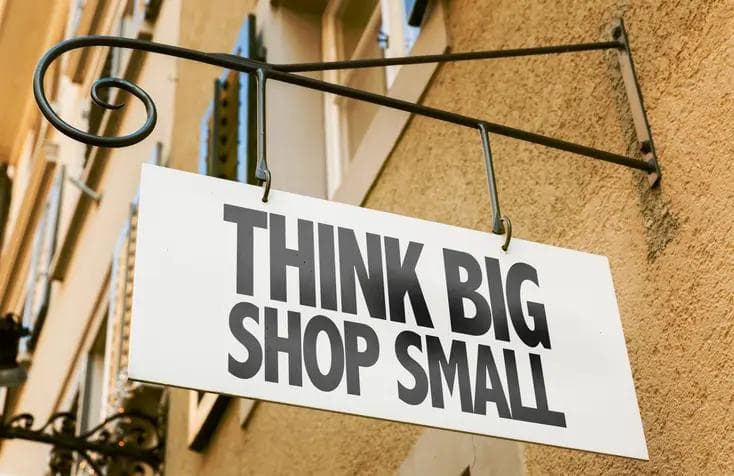Three reasons partnerships are critical for building trust online
Three reasons partnerships are critical for building trust online
Published by Wanda Rich
Posted on December 7, 2021

Published by Wanda Rich
Posted on December 7, 2021

By Ayaan Mohamud, Marketing Director, APAC

Ayaan Mohamud, Marketing Director, APAC
The finance industry has a trust problem. Here in Australia, financial institutions are struggling to regain their reputations in the wake of the Banking Royal Commission, while the ads they’re using to win back consumers are being met with skepticism, or worse, ignored completely.
Digital advertising is suffering under the weight of ad-blockers, deleted cookies and slow loading times. In fact, a staggering half of Australians have used an ad blocker or deleted their cookies in 2020, up 10% year-on-year according to data from We Are Social.
A lack of trust is behind Australians’ desire to switch off the ads, with 62% of online Australians expressing concern about what’s real or fake on the internet, while 63% worry about how companies will use their personal data. These privacy concerns have no doubt been fuelled by last year’s ACCC enquiry into digital platforms and documentaries including The Social Dilemma and The Great Hack.
Amongst this challenging backdrop, financial institutions are looking for new ways to build genuine, lasting trust with potential customers. Increasingly, financial brands are turning to carefully selected partners who can help them build trust by association.
In fact, the shift towards partnerships is so significant that it was listed as one of Deloitte’s key seven trends for 2021 in its Global Marketing Trends report. As we’re about to discover, partnerships are more powerful than they might first appear: they have the power to build reputations, help brands pivot in the face of a crisis, and acquire customers at scale.
Partnerships build trust by association
The new era of media consumption online means that customers are far more likely to pay attention to recommendations, reviews and word of mouth when making purchasing decisions.
Premium publishers and content creators are seen as trusted, authentic advisors by their audiences, and when they recommend a particular brand, their customers listen.
In fact, according to Nielsen’s recent Syndicated Real Life versus Digital Life report, almost half (46%) of respondents believe social media made an impact on purchasing decisions.
Partnerships – which can include anything from brand-to-brand partnerships to content creators, influencer partnerships or even charities – can introduce a new service or product to an established audience, without shoving advertising slogans in their faces. Brands are leveraging someone else’s audience to drive acquisitions, and absorbing a little of their partners’ ‘brand halo’ in the process.
Put simply, reputation and trust is built by showing, not telling. Financial brands must be able to show their credibility via a network of trusted partners, rather than simply telling their audiences what they think they want to hear. A healthy network of trusted partnerships is the perfect way to make that happen.
Partnerships help brands pivot
After the upheaval of the past couple of years, brands are desperate to build marketing solutions that are not only effective, but flexible. By building a strong array of loyal partners across a range of industries, finance brands are better positioned to be able to pivot their marketing strategies at a moment’s notice.
At the beginning of 2020, for example, leading fintech company Revolut was heavily focused on building partnerships with travel brands. The business was focused on monetising and increasing user engagement with its app’s Rewards section, which offers cashback and rewards for shopping with partnering brands. To do this, Revolut needed to partner with brands, which would allow them to build out their reward offerings, increasing payout potential and value to users.
When the COVID-19 pandemic brought travel to a shuddering halt, the brand quickly pivoted and began working with more ecommerce and fashion partners through the impact.com platform. They used their insight into their userbase’s shopping habits to identify brands they knew would drive strong performance.
Despite the chaos of 2020, the brand’s quick thinking and ability to find new partners meant it was able to maintain and even grow its earnings despite a huge disruption in what had previously been its core partner segment.
Partnerships can be automated at scale
Partnerships are clearly an effective marketing tool for the finance industry, but building them at scale can often pose a challenge for brands. Thankfully, partnership management technology such as impact.com is making the process much easier.
Automating partnerships in this way makes it far easier to manage, contract and reward partners at scale, giving brands the ability to immediately see which partners are performing and adjust accordingly.
Take UK-based digital challenger Starling Bank, for example. In order to promote the bank’s app and attract new customers, Starling decided to launch a small referral program with approximately ten content and comparison site partners. Although headed in the right direction, this network was tracked and managed through manual, time-intensive processes including approvals, invoicing, and reporting – leaving little bandwidth for relationship-building and growth.
After switching to impact.com, the bank was suddenly able to take advantage of automated processes at every phase of the partnership life cycle, from responding to inbound applications to getting contracts set up faster.
Automating the tracking and attribution process meant the bank was freed up from the time-sucking task of manually tallying which conversions were tied to which partners. Tracking visibility also helped Starling Bank optimise the performance of existing partners, ultimately helping them to seek out similar, new partnerships.
The effectiveness of partnership management technologies can not be understated. Last year, a Total Economic Impact (TEI) study by Forrester Consulting showed that the average organisation experienced a remarkable 314% return on investment by using impact.com’s platform, with the solution paying for itself in under six months.
In a world where trust is hard-won and reputation can be extinguished in seconds, finance brands are discovering the long-term benefit of partnerships. As we head into 2022, the shift is only set to continue.
This is a Sponsored Feature.
By Ayaan Mohamud, Marketing Director, APAC

Ayaan Mohamud, Marketing Director, APAC
The finance industry has a trust problem. Here in Australia, financial institutions are struggling to regain their reputations in the wake of the Banking Royal Commission, while the ads they’re using to win back consumers are being met with skepticism, or worse, ignored completely.
Digital advertising is suffering under the weight of ad-blockers, deleted cookies and slow loading times. In fact, a staggering half of Australians have used an ad blocker or deleted their cookies in 2020, up 10% year-on-year according to data from We Are Social.
A lack of trust is behind Australians’ desire to switch off the ads, with 62% of online Australians expressing concern about what’s real or fake on the internet, while 63% worry about how companies will use their personal data. These privacy concerns have no doubt been fuelled by last year’s ACCC enquiry into digital platforms and documentaries including The Social Dilemma and The Great Hack.
Amongst this challenging backdrop, financial institutions are looking for new ways to build genuine, lasting trust with potential customers. Increasingly, financial brands are turning to carefully selected partners who can help them build trust by association.
In fact, the shift towards partnerships is so significant that it was listed as one of Deloitte’s key seven trends for 2021 in its Global Marketing Trends report. As we’re about to discover, partnerships are more powerful than they might first appear: they have the power to build reputations, help brands pivot in the face of a crisis, and acquire customers at scale.
Partnerships build trust by association
The new era of media consumption online means that customers are far more likely to pay attention to recommendations, reviews and word of mouth when making purchasing decisions.
Premium publishers and content creators are seen as trusted, authentic advisors by their audiences, and when they recommend a particular brand, their customers listen.
In fact, according to Nielsen’s recent Syndicated Real Life versus Digital Life report, almost half (46%) of respondents believe social media made an impact on purchasing decisions.
Partnerships – which can include anything from brand-to-brand partnerships to content creators, influencer partnerships or even charities – can introduce a new service or product to an established audience, without shoving advertising slogans in their faces. Brands are leveraging someone else’s audience to drive acquisitions, and absorbing a little of their partners’ ‘brand halo’ in the process.
Put simply, reputation and trust is built by showing, not telling. Financial brands must be able to show their credibility via a network of trusted partners, rather than simply telling their audiences what they think they want to hear. A healthy network of trusted partnerships is the perfect way to make that happen.
Partnerships help brands pivot
After the upheaval of the past couple of years, brands are desperate to build marketing solutions that are not only effective, but flexible. By building a strong array of loyal partners across a range of industries, finance brands are better positioned to be able to pivot their marketing strategies at a moment’s notice.
At the beginning of 2020, for example, leading fintech company Revolut was heavily focused on building partnerships with travel brands. The business was focused on monetising and increasing user engagement with its app’s Rewards section, which offers cashback and rewards for shopping with partnering brands. To do this, Revolut needed to partner with brands, which would allow them to build out their reward offerings, increasing payout potential and value to users.
When the COVID-19 pandemic brought travel to a shuddering halt, the brand quickly pivoted and began working with more ecommerce and fashion partners through the impact.com platform. They used their insight into their userbase’s shopping habits to identify brands they knew would drive strong performance.
Despite the chaos of 2020, the brand’s quick thinking and ability to find new partners meant it was able to maintain and even grow its earnings despite a huge disruption in what had previously been its core partner segment.
Partnerships can be automated at scale
Partnerships are clearly an effective marketing tool for the finance industry, but building them at scale can often pose a challenge for brands. Thankfully, partnership management technology such as impact.com is making the process much easier.
Automating partnerships in this way makes it far easier to manage, contract and reward partners at scale, giving brands the ability to immediately see which partners are performing and adjust accordingly.
Take UK-based digital challenger Starling Bank, for example. In order to promote the bank’s app and attract new customers, Starling decided to launch a small referral program with approximately ten content and comparison site partners. Although headed in the right direction, this network was tracked and managed through manual, time-intensive processes including approvals, invoicing, and reporting – leaving little bandwidth for relationship-building and growth.
After switching to impact.com, the bank was suddenly able to take advantage of automated processes at every phase of the partnership life cycle, from responding to inbound applications to getting contracts set up faster.
Automating the tracking and attribution process meant the bank was freed up from the time-sucking task of manually tallying which conversions were tied to which partners. Tracking visibility also helped Starling Bank optimise the performance of existing partners, ultimately helping them to seek out similar, new partnerships.
The effectiveness of partnership management technologies can not be understated. Last year, a Total Economic Impact (TEI) study by Forrester Consulting showed that the average organisation experienced a remarkable 314% return on investment by using impact.com’s platform, with the solution paying for itself in under six months.
In a world where trust is hard-won and reputation can be extinguished in seconds, finance brands are discovering the long-term benefit of partnerships. As we head into 2022, the shift is only set to continue.
This is a Sponsored Feature.
Explore more articles in the Business category











